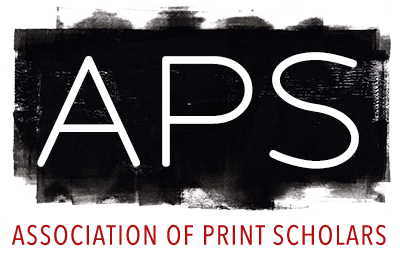Exhibition Information
Posted: 08/13/2017
Posted by: Association of Print Scholars
A Century of Japanese Prints
Rhiannon Paget, Andrew W. Mellon Fellow for Japanese Art.
Saint Louis Art Museum,
St. Louis,
MO, United States.
08/11/2017 -
01/28/2018.
A Century of Japanese Prints presents a selection of the Museum’s finest examples of modern and contemporary Japanese prints from the 20th and 21st centuries, two thirds of which have never before been displayed at the Museum. Unfolding over 100 years, the works in the exhibition span new prints (shin hanga), creative prints (sōsaku hanga), and postwar and contemporary prints.
Commercially published new prints brought a modern sensibility to the traditions of ukiyo-e, "pictures of the floating world," a category of woodblock prints and paintings that depict beautiful women, kabuki actors, landscapes, and scenes from everyday life that flourished between the mid-18th and early 20th centuries. The 2016 acquisition "Tipsy," a renowned image by artist Kobayakawa Kiyoshi (1899–1948), depicts a "modern girl"—Japan's answer to the 1920s flapper.
Artists of the creative print movement rejected the commercialism of ukiyo-e and new prints, and instead explored the potential of printmaking to be a medium of artistic expression equal to painting and sculpture. To assert complete creative authority over their works, many artists insisted on carving and printing their own designs, frequently resulting in a rough finish that celebrated the material qualities of the woodblock.
Printmaking continued to flourish and diversify during the post-war period. Japanese artists found new patrons among members of the Occupation, participated in international juried exhibitions, travelled widely, and lived abroad. Moving beyond the practices of shin hanga and sōsaku hanga, artists began working with techniques such as etching, screen-printing, and inkjet printing, and engaging with international art movements such as Conceptualism and Minimalism.
Commercially published new prints brought a modern sensibility to the traditions of ukiyo-e, "pictures of the floating world," a category of woodblock prints and paintings that depict beautiful women, kabuki actors, landscapes, and scenes from everyday life that flourished between the mid-18th and early 20th centuries. The 2016 acquisition "Tipsy," a renowned image by artist Kobayakawa Kiyoshi (1899–1948), depicts a "modern girl"—Japan's answer to the 1920s flapper.
Artists of the creative print movement rejected the commercialism of ukiyo-e and new prints, and instead explored the potential of printmaking to be a medium of artistic expression equal to painting and sculpture. To assert complete creative authority over their works, many artists insisted on carving and printing their own designs, frequently resulting in a rough finish that celebrated the material qualities of the woodblock.
Printmaking continued to flourish and diversify during the post-war period. Japanese artists found new patrons among members of the Occupation, participated in international juried exhibitions, travelled widely, and lived abroad. Moving beyond the practices of shin hanga and sōsaku hanga, artists began working with techniques such as etching, screen-printing, and inkjet printing, and engaging with international art movements such as Conceptualism and Minimalism.
Relevant research areas: East Asia, 20th Century, Contemporary, Digital printmaking, Etching, Relief printing, Screenprinting
